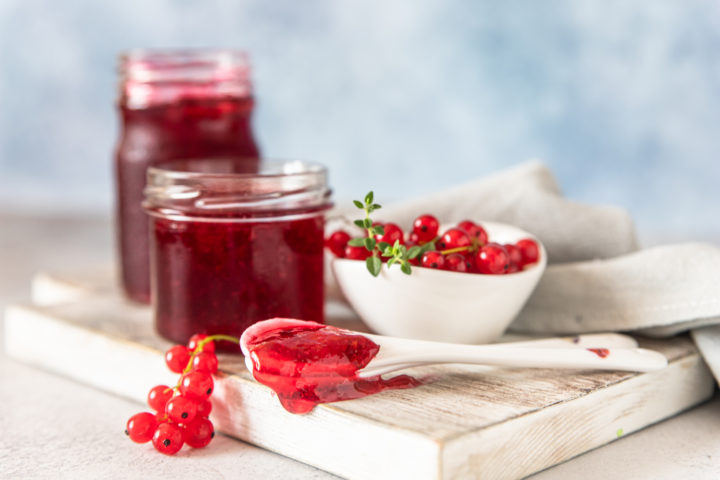
So, you're cooking up something, and the recipe requires currant. But then, you realize that you've run out of that ingredient. Worse, the currants at the grocery have gone out of stock, too. Don't fret! There are numerous alternatives for currants.
The best substitutes for currants are raisins, prunes, cranberries, dried dates, dried cherries, jujube, dried apricots, and blueberries. The best choice will depend on what you are making. It is essential to look at each of these alternatives in detail.
Currants are sweet and flavorful. That's why they are a great ingredient to your healthy snacks and many sweet dishes. But, while they are available all year round, there are times when they play hard to get. So the next time you run out of currant, this article will come in handy.
Table of Contents
8 Best Currant Substitutes
1) Raisins
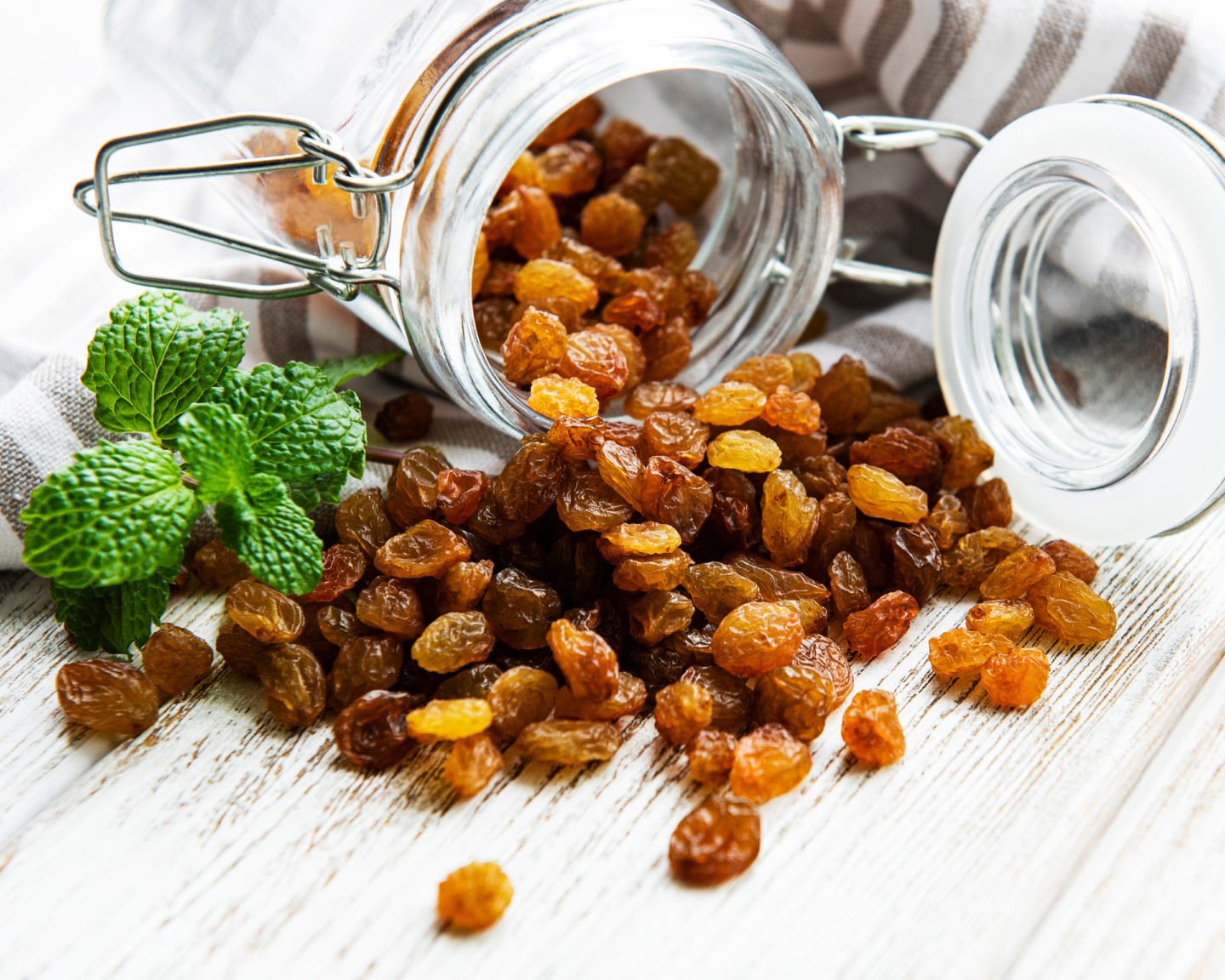
Raisins are the sun-dried version of grapes. Currants and other raisins have a lot in common. Both are grapes that have been dehydrated to give them a stronger flavor and a longer shelf life.
They are used to replace currants in cereals and baked products. They are a snack food, too. It comes in dark purple, green, red, and yellow colors. Thus, if you're looking for a sweet taste as well as some additional colors to spice up your cuisine, raisins may be the best choice.
Raisins are just as nutritious as Zante currants, too. Eating them benefits one's digestive health because it is high in iron, potassium, and calcium and low in cholesterol and fat.
Before the Middle Ages, raisins are a sweetener in combination with honey. They may contain more sugar in the dehydrated form, but you will benefit from the additional fiber. For those with allergies to sulfite, the golden raisins are usually the only sort that contains these allergens, so you must read the labels carefully.
According to the USDA, a quarter-cup of raisins has:
- Calories: 108
- Fat: 0 grams
- Protein: 1 gram
- Carbohydrates: 29 grams
- Sugar: 21 grams
- Fiber: 1 gram
If you use raisins as a substitute, it's best to plump them up before using them. Then, soak the raisins for about 15 minutes in hot water or the recipe's fluid until round. Many raisins are larger than Zante currants, necessitating chopping, freezing, or heating.
You can add raisins to sweet and savory recipes such as fruit cakes, raisins and pinto beans, muffins, oatmeal, and pudding. You may also consume them as a healthful snack. In place of currants, you can use them in a 1:1 ratio.
2) Dried Prunes
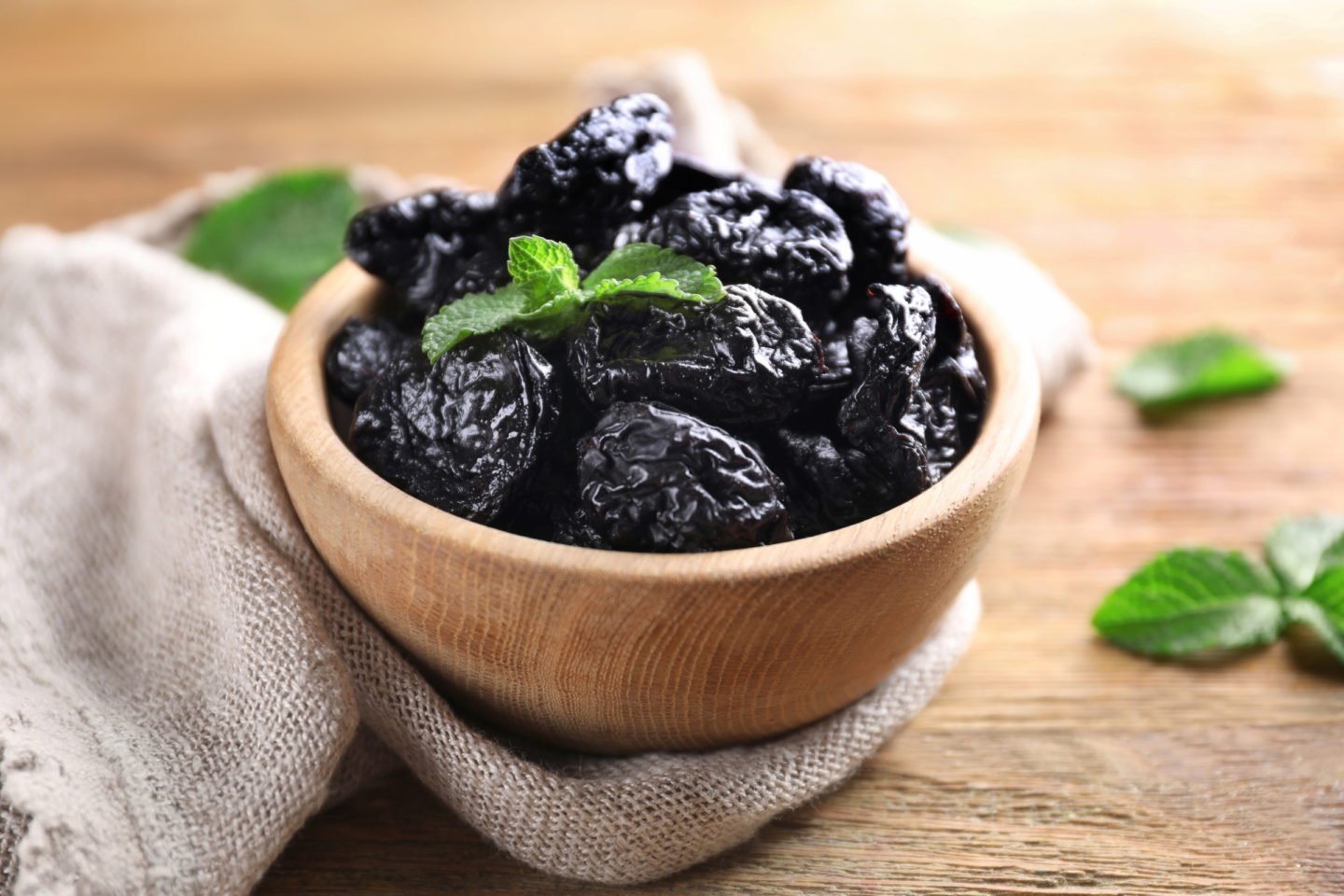
A prune is a dried plum. California produces 95% of all prunes in the United States and 70% of all prunes globally. They look like plums when fresh but resemble dates, especially when dried. A chewy texture and a delicate sweet flavor emerge at the end of the dehydration process.
Dates, plums, and prunes are often confused with each other. Prunes have a dark wrinkled surface and a soft, mushy interior, similar to raisins and dates, but they are moist and do not dry up even when exposed to air. Some prunes have a simple sweet flavor, similar to dates, while others have a more tangy flavor, identical to currants.
Prunes have a bad reputation in American culture since they're generally associated with the elderly's problems and infirmity. They are, however, popular in European and Middle Eastern meat meals and sweet cuisines. Prunes are a fantastic substitute for currants in many recipes in both cultures.
The dried form of prunes is high in iron, vitamin B, C, K, and potassium. They also have sorbitol, which is a fiber-like molecule that aids digestion. Even nutritionists and doctors recommend eating prunes to enhance bowel movements.
According to the USDA, a quarter-cup of dried prunes has:
- Calories: 105
- Fat: 0 grams
- Protein: 1 gram
- Carbohydrates: 28 grams
- Sugar: 17 grams
- Fiber: 3 grams
Prunes are used in various recipes, including cakes, tarts, and meat dishes like braised pork or roast turkey. Stewed prunes are sweet and tasty, a perfect topping for baked dishes, ice creams, yogurt, bread, and puddings.
Remove the prune's stones with a tiny knife if they are not the pitted variety. Also, if you're not going to use them in a liquid-based meal, soak them in water, orange juice, or wine.
To substitute prunes for currant, half a cup of prunes for every cup of currants is a good rule of thumb. However, this ratio may depend on the type of prunes you have. If it's sweet, that proportion should suffice; however, if it's tart, you may add honey or brown sugar to the mix.
3) Dried Dates
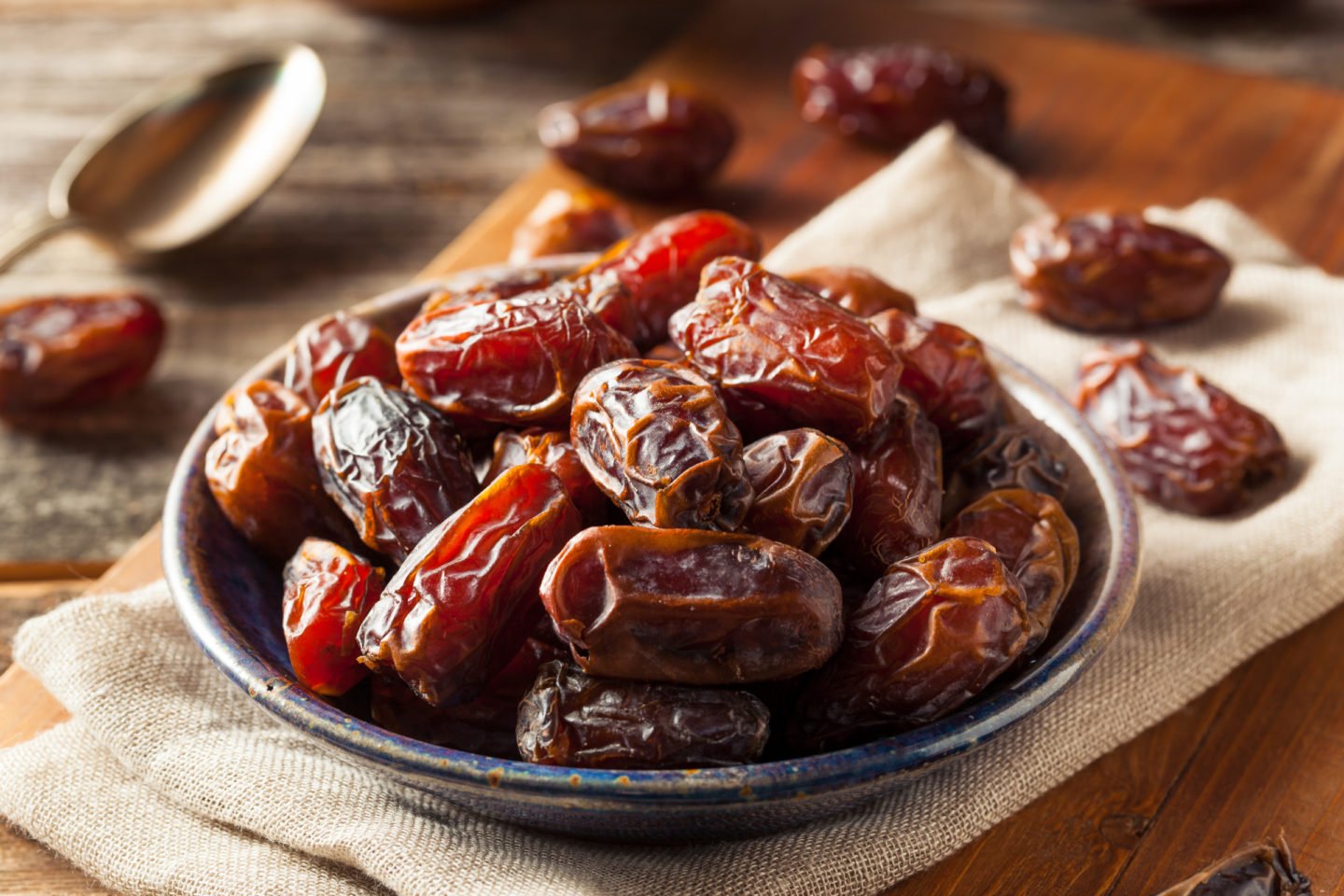
Dried dates are also a good substitute for currants. They are a larger, sweeter, more caramelized, and chewier raisin popular in Middle Eastern cuisine. They are also available as pitted or whole. The Deglet Noir, smaller and dryer than the Medjool dates, is the most widely sold pitted date in the United States. Pitted dates can be eaten as a snack or chopped and added to cereals, baked goods, and even date milkshakes.
You can replace currants with dates, which are a healthier option. Dried dates, like other dehydrated fruits, are a source of energy. They're not only tasty but also nutrient-rich. It is abundant in potassium, a crucial mineral for athletes to maintain fluid balance in their bodies. These fruits are also low in fat and high in calcium, protein, iron, and vitamins A and C.
According to the USDA, a quarter-cup of dried pitted dates has:
- Calories: 125
- Fat: 0.17 grams
- Protein: 1.09 gram
- Carbohydrates: 33.39 grams
- Sugar: 28.19 grams
- Fiber: 3.6 grams
As a natural sweetener, dates can replace currants when creating jams. Because of its soft, creamy, and chewy interior, it can also be eaten as a snack. They have a distinct aroma and are used in delicacies such as cakes, filled pastries, and pies. Dates are also found in curries, couscous meals, and salads outside North America.
Chopping sticky dates is difficult, and kitchen shears are preferable to a knife in these circumstances. You can also avoid further sticking by dipping the blade in flour or warm water.
Replace half a cup of currant with half a cup of dates. Try adding a tablespoon of citrus to cut down on the overpowering sweetness.
4) Jujube
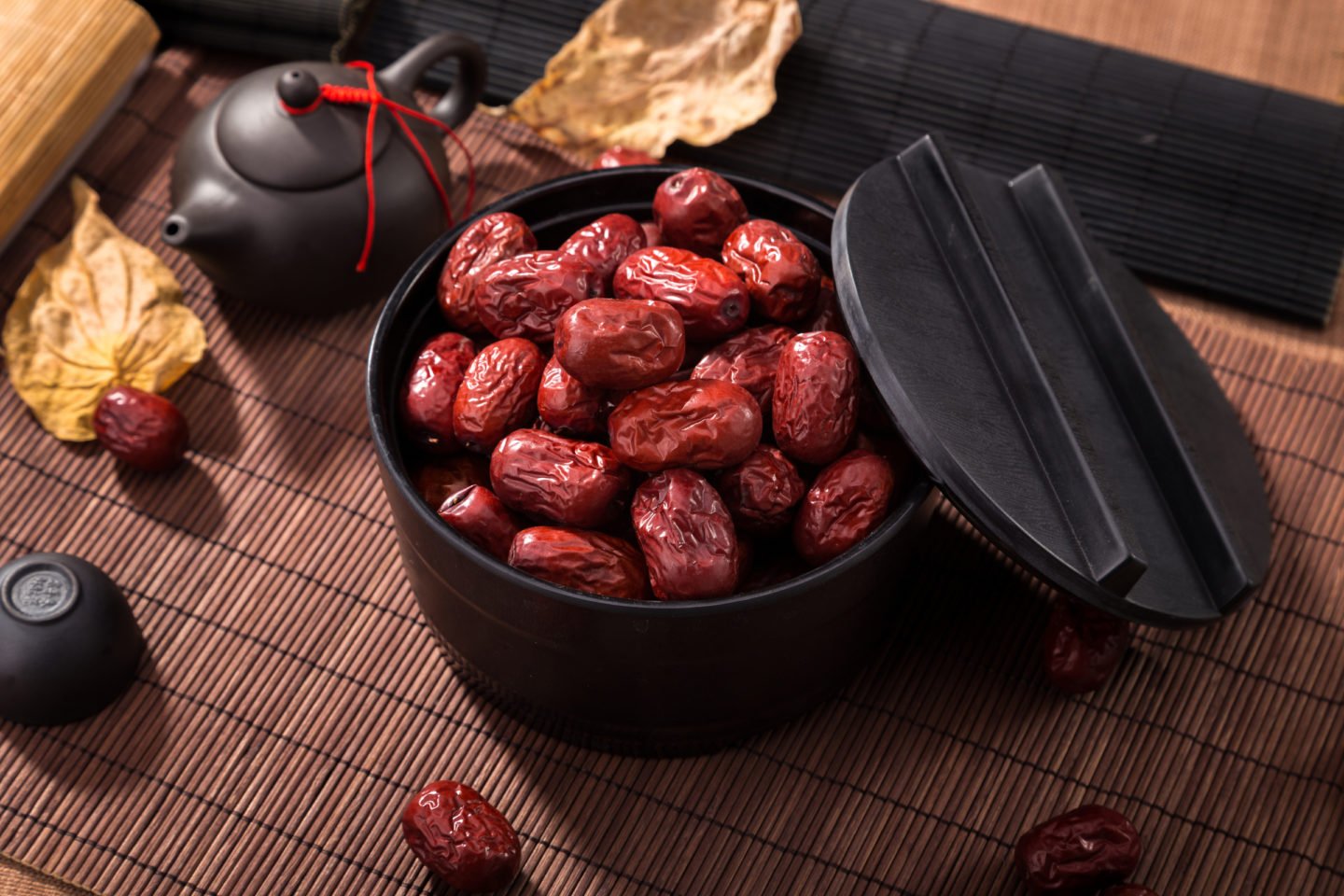
This fruit is commonly referred to as the Chinese dates. This type of fruit is common in China, although you can find other varieties in Mediterranean and African countries. Although it may be strange, this fruit is widely available in your local Chinese stores.
The flavor of fresh jujube fruit is similar to that of tiny apples. Dried jujube fruit is similar to that of dates. Although they lack the juiciness of currants and have a similar texture to apples, they are delicious on bread, cookies, and pastries. They also make excellent jam and jelly in place of currants.
Jujubes have various outstanding health benefits. These fruits are extensively used in Chinese and Korean traditional medicine, where people think they help ease stress and alleviate inflammation. Vitamins, minerals, phosphorus, and calcium are also abundant. In both fresh and dried forms, they are also high in fiber.
According to USDA, an ounce of dried jujube has:
- Calories: 81
- Protein: 1.05 grams
- Fat: 0.31 grams
- Carbohydrates: 20.87 grams
You should stew jujubes for a long time before being used as a dessert filling. They go nicely with soups, sauces, jams, desserts, and compotes. They also blend with nuts, oranges, cream cheese, and coconut, as well as sweeteners like honey, chocolate, and sugar.
5) Dried Cherries
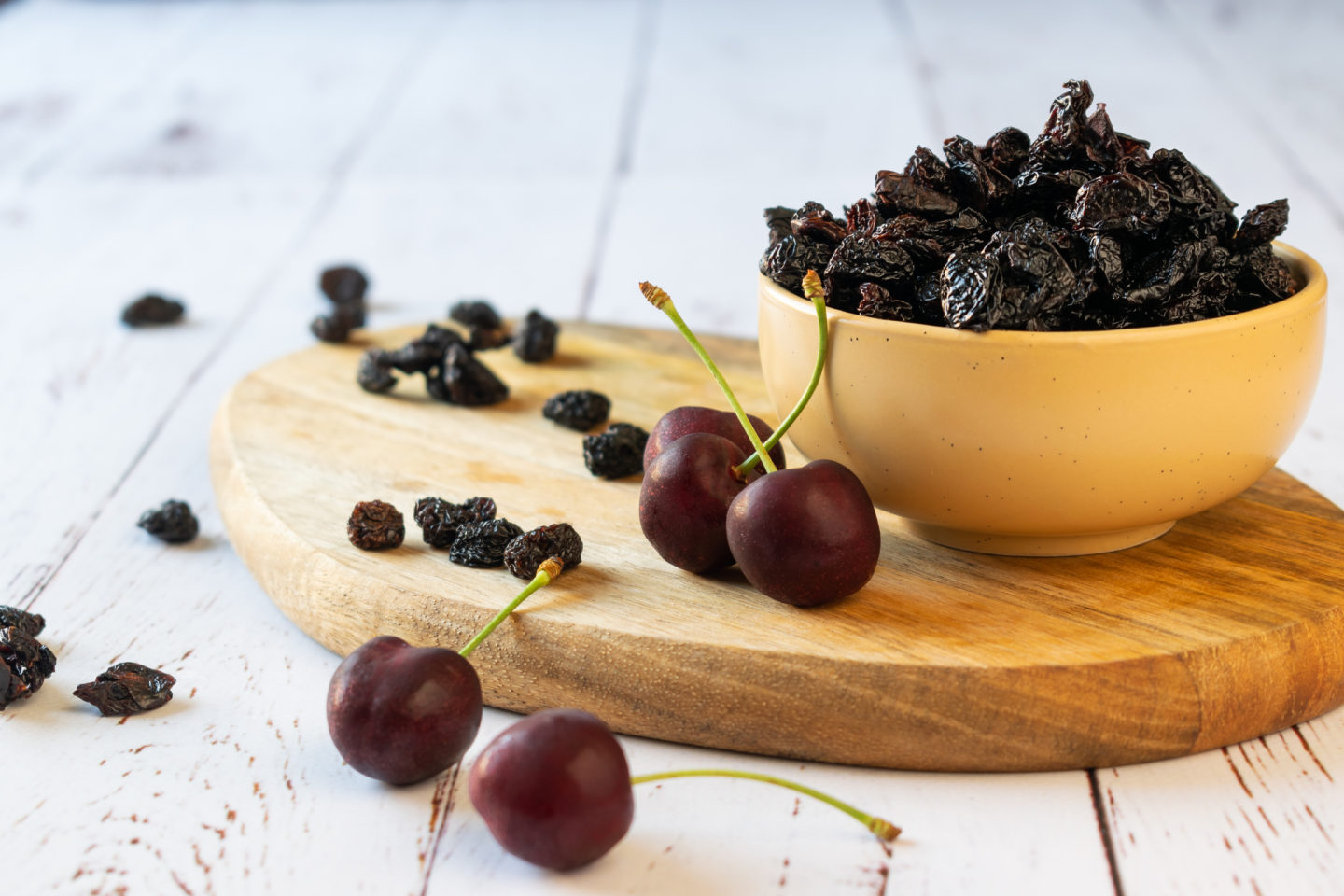
Cherries are another replacement for currant. Either sun-dried or oven-dried, cherries can be consumed as a snack, added to breakfast cereals, or mixed into baked products. Montmorency cherries are the most common type of tart cherry. They can be sweetened and coated with glycerine after drying.
They make a good alternative because their flavor is quite similar to that of currants. On the other hand, their physical appearances and consistency are the most noticeable differences. Dried currants are much darker than dried cherries, which are bright red. If you're concerned about the looks of your meal, go for the slightly brown ones that look like currants. Some cherries are more tart than sweet; find refuge that 'snow cherries,' a type of cherry rolled in white sugar, is also available.
Dried cherries, like most dried fruits, are a healthful snack. They're high in vitamins, including provitamin A, iron, calcium, and minerals.
According to USDA, a quarter cup of dried cherries has:
- Calories: 120
- Protein: 0 grams
- Fat: 0 grams
- Carbohydrates: 26 grams
- Fiber: 3 grams
- Sugar: 17 grams
You can use dried cherries instead of dried currants for topping ice creams or sweets or making jams. Their sweet-tart flavor also works well in muffins, pastries, and cereal bars. Also, don't be scared to experiment with new dishes like dried cherry and shallot Confit or turkey and dried cherry salad.
When using dried cherries, use an oiled knife to make cutting simpler. Store it somewhere cold and dry if you've opened your dried cherries package. Because they don't have any specific storage needs, you can keep them open for up to 12 months without freezing them.
When boiled and pureed, dried cherries can look like a raisin or a sultana and have the same mushy texture as currants. As with other alternatives, the ratio for substitution is 1:1. But, you'll need to sweeten the dish with sugar, honey, maple syrup, or whatever sweetener you prefer to make it less tart.
6) Dried Apricots
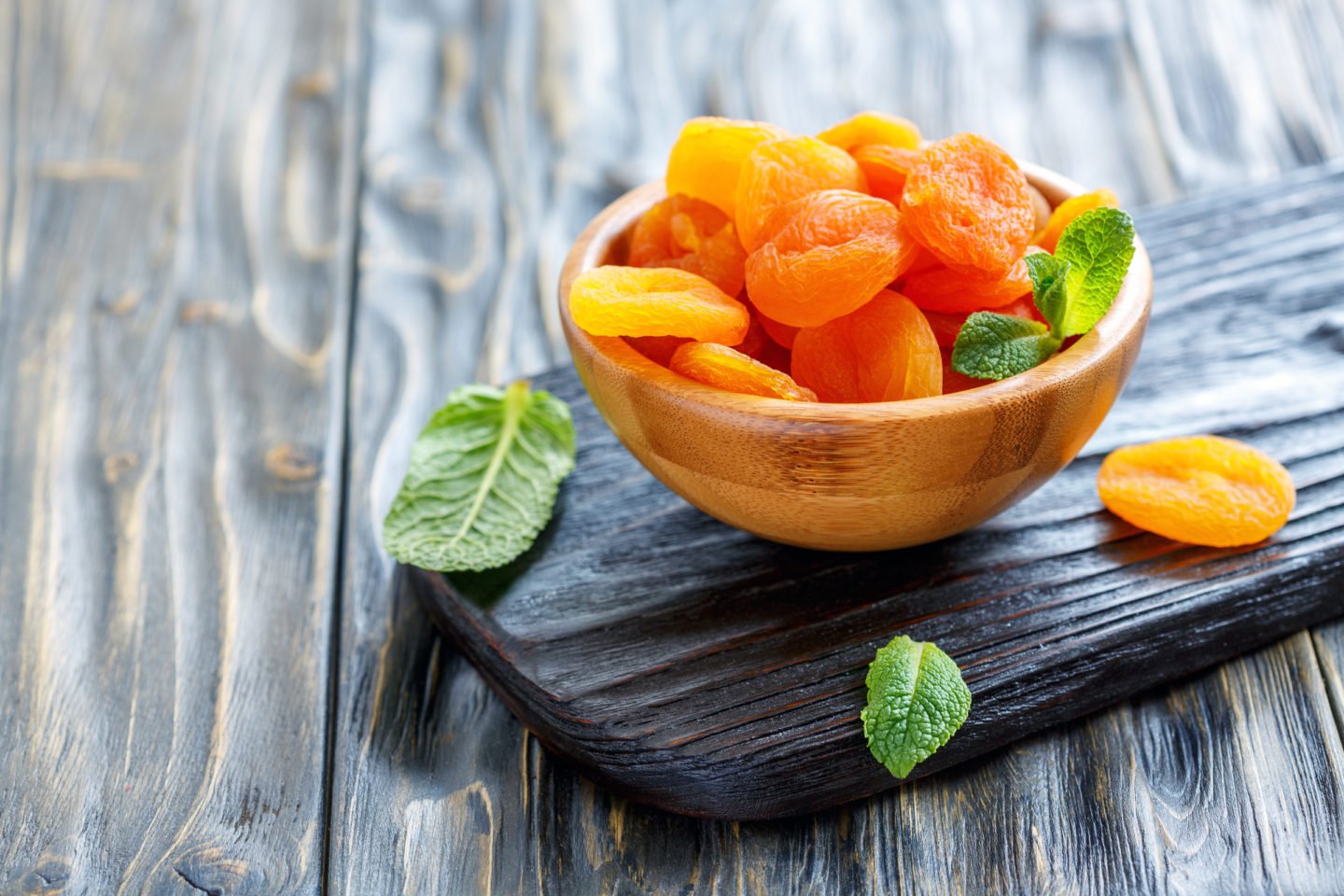
Dried apricots can be used as a substitute for dried currants. Apricots have a dry texture and a tart flavor. They contribute a similar taste as currants and delightful flavor for fruit tarts and other pastries.
Vitamins A, C, and E are abundant in these fruits. Dried apricots contain 94 percent of your daily Vitamin A needs and 19 percent of your iron needs. They contain the highest amount of Vitamin A among all dried fruits. They are also high in potassium and antioxidants and help with cholesterol reduction and good digestion. Dried apricots are fat-free, low-calorie, and delicious.
According to USDA, an ounce of dried apricots has:
- Calories: 68
- Protein: 0.96 grams
- Fat: 0.14 grams
- Carbohydrates: 17.76 grams
- Fiber: 2.1 grams
- Sugar: 15.15 grams
You can make them into delicious baked products like muffin toppers and cakes because they have a sweet flavor. Aside from confections and pastries, dried apricots go well with savory foods, like lamb dishes. This healthy alternative offers a delightful sweetness that contrasts nicely with the spicy and savory components when cooked.
When chopping dried apricots in a food processor, add some flour to lessen the stickiness. Also, it's a good idea to oil the blade of your kitchen shears or knife if you're going to chop them by hand.
However, you can make exquisite dishes without any special apricot preparation. If you don't have any currant, cook the instant meals on the stove with ½ cup apricot and ¼ cup grill sauce to provide a nice contrast to your regular meals.
7) Cranberries
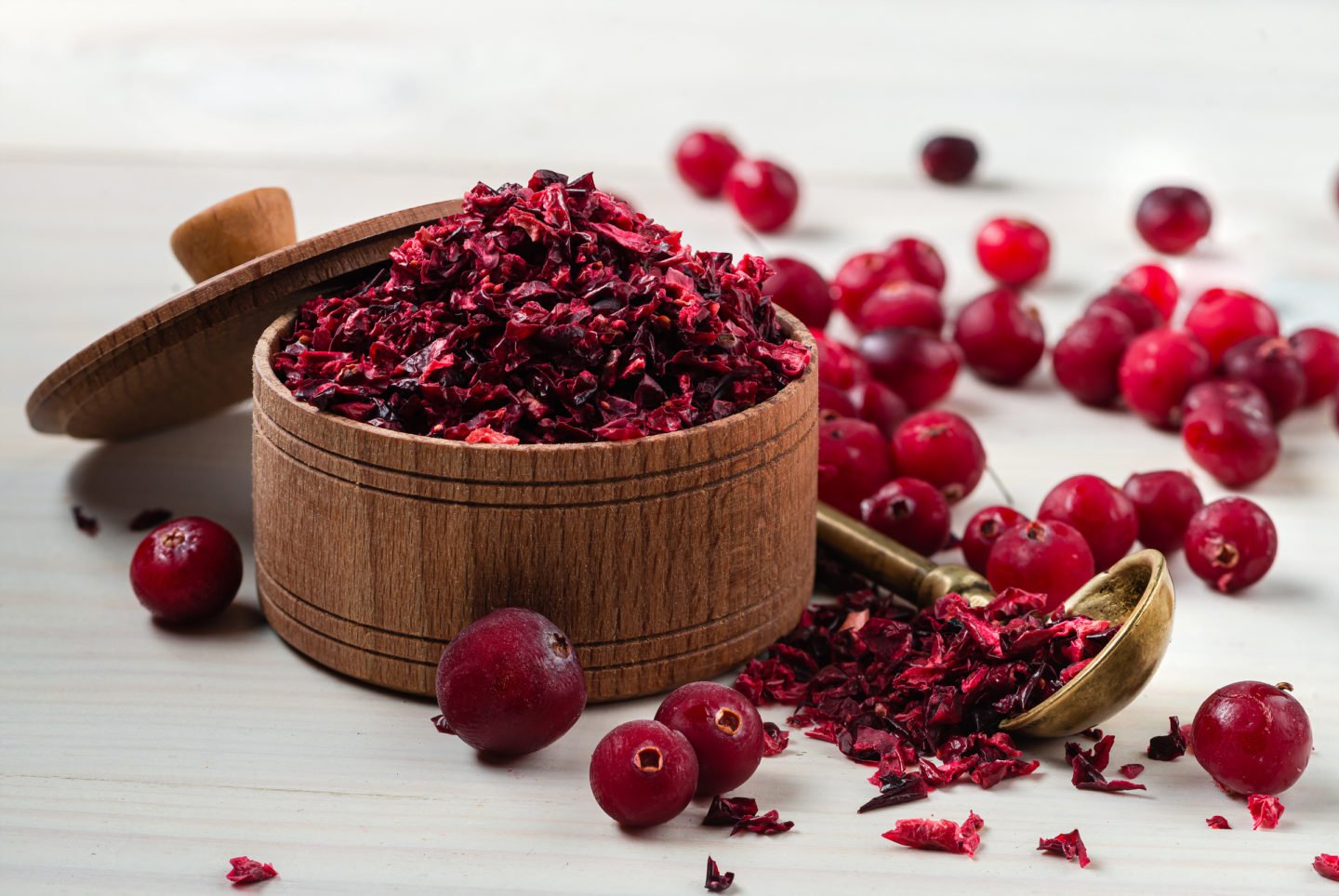
Fresh cranberries resemble currants in appearance and flavor. Fresh cranberries are dried and mixed with glycerin or sugar and oil to create dried cranberries. They have a tangier flavor and slightly slick texture than the fresh ones.
Cranberries are one of the healthiest currants substitutes. They are abundant in Vitamin C. They're minimal in carbs, sugar, and calories while high in antioxidants and vitamins. Cranberries contain five times the quantity of antioxidants found in broccoli. These fruits aid in the improvement of circulation and the strengthening of the immune system. They also help decrease bad cholesterol and keep urinary tract infections at bay.
According to USDA, a quarter cup of cranberries has:
- Calories: 123
- Fat: 0.4g
- Sodium: 2mg
- Carbohydrates: 33g
- Fiber: 2g
- Sugar: 29g
- Protein: 0.1g
If you like currant jelly, cranberries are a terrific substitute. This fruit has the same flavor, fragrance, and consistency as currant when made into jelly. If it weren't for the brilliant hue, you wouldn't be able to tell the difference.
Dried cranberries can be used in cereals, granola, salads, and baked products, including scones, muffins, and bread. Cranberries can also be used to produce savory sauces and fillings for pastries, pies, and cakes.
When purchasing packed cranberries, look for firm, unbrushed cranberries. Before using, wash the cranberries and eliminate those with mold or bruises. Frozen cranberries can be used for up to a year if stored properly.
The replacement ratio of currant to cranberry is similarly 1:1. So there's no need to add a sweetener, especially if you're using the fruit in aromatic dishes.
8) Blueberries
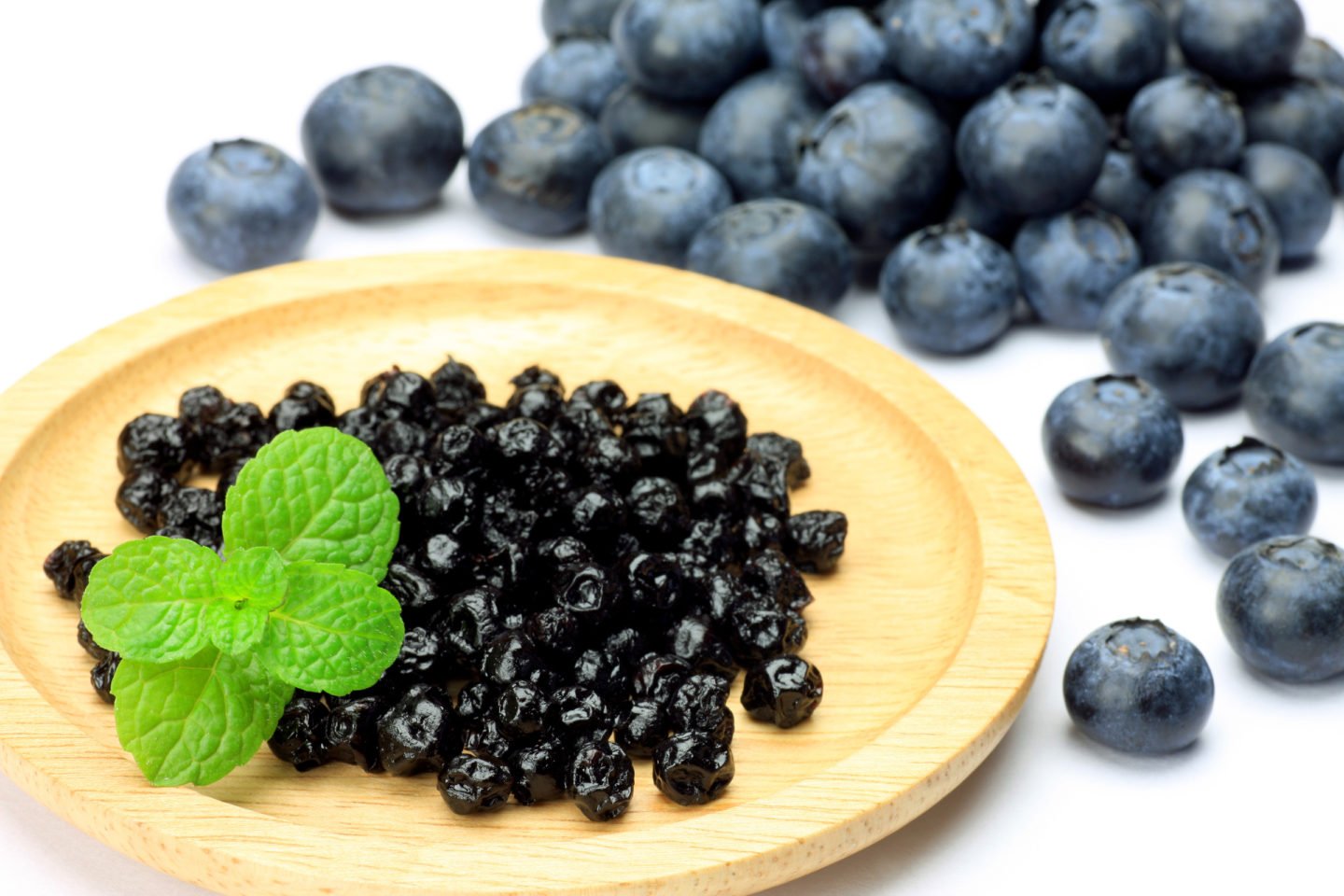
Whether fresh or dried, blueberries are another berry that rarely disappoints as a currant substitute. They have a sweet flavor with a hint of acidity, similar to dried currants. Blueberries are also a good alternative for fresh black currants.
Blueberries are low in calories and high in vitamin C and antioxidants, making them excellent for your eyes, digestive system, and heart.
According to USDA, a quarter cup of blueberries has:
- Calories: 21
- Fat: 0.12g
- Carbohydrates: 5.25g
- Fiber: 0.9 g
- Sugar: 3.61g
- Protein: 0.27g
These dried fruits' delicate sweetness works wonders in baked items. It also works well in trail mix and oatmeal—as a topping or simple snack. In addition, dried blueberries add a new dimension to salads with their rich sweetness and delightful texture. They also bring balance to the sour flavor of vinegar-based dressings.
If you're convinced to use blueberries, simply add them to your dish as you normally would currants, or rehydrate them in water if your recipe calls for fresh fruit. If you want to speed up the process of drying blueberries, don't raise the temperature too high. That may result in them being burned on the outside.
Summary
Take a look at the best currant substitutes and their remarkable qualities. See which ones fit your cooking needs.
| Substitute | Notes |
|---|---|
| Raisins | In place of currants, you can use them in a 1:1 ratio. |
| Dried Prunes | Substitute half a cup of prunes for every cup of currants. |
| Dried Dates | Replace ½ cup of currant with ½ cup of dates. Add a tablespoon of citrus to cut down the overpowering sweetness. |
| Jujube | You should stew jujubes for a long time before being used as a dessert filling. |
| Dried Cherries | Substitution is 1:1 but sweeten the dish with honey or syrup to make it less tart. |
| Dried Apricots | If you don't have any currant, add ½ cup apricot and ¼ cup grill sauce to your dish. |
| Cranberries | The replacement ratio of currant to cranberry is 1:1 but there's no need to add a sweetener. |
| Blueberries | Simply add them to your dish as you normally would currants. |
Before you choose a currant substitute, consider the dish you are making.
Overall, raisins are the best substitutes for currants. Dried prunes, apricots, and jujube are perfect for topping your sweet recipes or baked dishes. Dates, too, can be incorporated into any sweet dish made out of currants.
Cherries offer the same advantage, but they may look different from currants. Cranberries provide a healthy option and are the best alternative in making jam and jellies. At the same time, blueberries are the go-to when you need a replacement for fresh and dried currants.
The best substitutes for dried currant are raisins, prunes, cranberries, dried dates, dried cherries, jujube, dried apricots, and blueberries. On the other hand, strawberry, blackberry, raspberry jams, and cranberry relish are the best red currant jelly replacements.
Related Questions
Fresh currants are blooming bushes belonging to the Ribes family that flourish in northern areas with hot summers and freezing winters. These berries grow in clusters. They ripen best when they are left on the plant. Its color ranges from a deep dark purple to a ruby red to an almost translucent white. All three varieties are tart and juicy, although the exact flavor depends on its color.
When eaten raw, they are sour. You may sprinkle fresh currants on your morning yogurt or eat them by the handful. When cooked, however, they become wonderfully sweet and juicy. Fresh currants can be used in tarts and pies, sorbets, and puddings. Use them fresh in fruit salads or add a splash of color to sweets.
Jams and preserves are also the best way to make the most out of fresh currants. They are naturally high in pectin and acidity that allows them to gel independently. In sauce recipes, red currant jelly is a typical component. They make meats like a hog, lamb, or game more flavorful with a hint of sweetness.
Fresh currants can be frozen to detach them from the stem easier. It's also normal to leave the stems on when making jam and then remove them after cooking.
On the other hand, dried currants (those described in the first section), commonly known as Zante currants, are tiny raisins created by drying a seedless grape variety known as Black Corinth. They are not linked to the fresh currants, which are true berries.
You can wonderfully blend dried currants into scone dough and adorn gingerbread biscuits. To add texture and delicate sweetness to savory dishes, toss dried currants into rice pilaf or stuffing for chicken, turkey, or game hens.
Fresh currants are a poor alternative for dried currants. It may look like dark raisins when dry, but it has an acidic, earthy flavor that contrasts sharply with the sweetness of dry Corinth or Zante.
These are fresh currant varieties. Black currants are larger than both red and white ones. Black currants are frequently coupled with almonds and almond extract, but they also pair well with juniper and gin flavors because of their herbal undertones.
White and red currants are sweeter and more delicate. They are often used in recipes fresh. Red currants have a tart and pungent flavor, although they aren't as herbal or savory as black currants. White currants have a similar size and appearance as red ones, but they are sweeter.
Red currants are popularly used in jellies, cakes, puddings, and galettes. It has a tart and sweet flavor worth seeking out, but if you can't find one, a replacement won't harm you. Strawberry, blackberry, raspberry jams, and cranberry relish are the best red currant jelly replacements.
Raisins, sultanas, and currants are all made out of different varieties of grapes.
Zante, Black Corinth, or Carina grapes produce dried currants; raisins are created from differing grape types, while sultanas are from green seedless grapes.
Sultanas are processed by adding sulfur dioxide to speed up the desiccation. Unlike the processing of currants and raisins that take three weeks, it only takes sultanas a week to be ready.
Sultanas have the same flavor and consistency as currants when soaked in water and cooked as a sauce.
Dried currants, like other raisins, are well-known for their digestive health benefits.
The nutrients in fresh currant are similar to those in the dehydrated version. People tend to consume dried currants more because they have been shrunk to half or a third of their original size.
They are high in minerals, including zinc, magnesium, iron, and, most importantly, potassium. A potassium level of 0.8 percent per weight on average makes them beneficial for managing high blood pressure.
But, more importantly, these are high in antioxidants, which reduce damage in the body and lower the risk of several diseases. It also produces three times the antioxidants in grapes, especially Polyphenols and Reservatrol.
Currants belong to foods with a moderate glycemic index (GI). So, people with diabetes and metabolic disorders can consume them, although in moderation.
Fresh currants have a fruit flavor that is both sweet and tart. Red currants can be used in place of blueberries as a cereal topping or your daily bowl of oatmeal. Aside from a red currant jam, you can incorporate them in a muffin recipe or a quick loaf recipe. You can also create a red currant and red onion relish, red currant and raspberry cobbler, a red berry coulis, and so much more.
Meanwhile, dried currants are frequently used in cooking and baking due to their soft skin and small size. You can mix currants into scone dough instead of ordinary raisins for a sweet treat. White fruitcake recipe, butter tarts with dried currants, miniature muffins with currant are just some of the recipes you may love. Currants will lend a bit of sweetness and texture to your bread, salads, or festive stuffings if you're in the mood for something savory.
If you're too busy, though, you can snack a handful of them. However, because dried currants contain many sugar and calories, consume them in moderation.
Fresh currants have a short shelf life. Therefore, it's better to wrap them lightly or keep them cold. Before using fresh currants, give them a quick rinse and carefully pat them dry with a clean cloth. As with other berries, don't wash them ahead of time; the excess moisture may limit their shelf life and cause them to mildew or rot in the fridge.
You can freeze currant in a single layer on a baking sheet, then transfer to sealable plastic bags and store in the freezer for up to 6 months, much like other berries.
Currants are typically preserved in jams, but they can also be dried in a dehydrator.

Leave a Reply